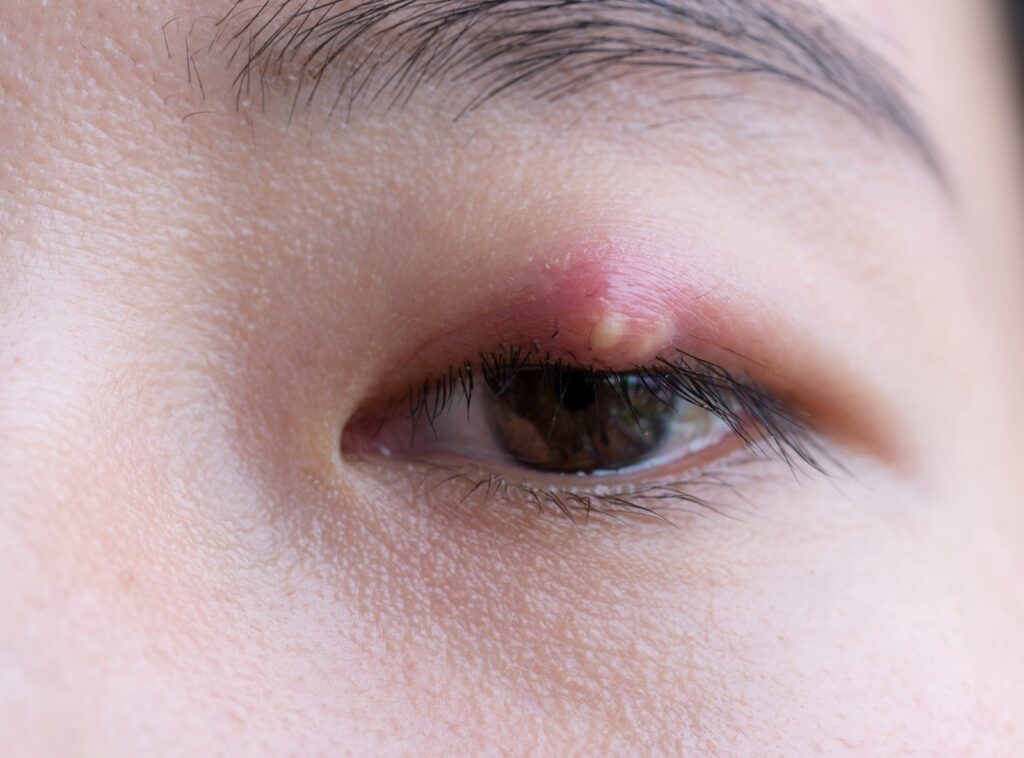Introduction to Styes and their Significance in Maintaining Eye Health
A stye might sound small, but it packs a punch when it comes to discomfort and eye health. Styes are those pesky, painful bumps that appear on the edge of your eyelid. They can make even a simple blink a painful experience. They’re common and usually minor, but knowing how to deal with them is key.
Understanding Styes
Definition, Description, and Types of Styes (Internal vs. External)
A stye is a small, painful lump near the edge of your eyelid. These bumps look like pimples and can happen on the outside or inside of the eyelid. There are two types of styes: external and internal. – External styes appear at the base of an eyelash and often look like small yellow dots. – Internal styes occur inside the eyelid and tend to be more painful.
Prevalence of Styes and Comparison of Incidents in India Versus Globally
Styes are quite common around the world. In India, many people report styes, especially in areas with higher pollution levels. Compared to global figures, styes are seen more frequently in highly polluted regions or where sanitation isn’t optimal. Environmental factors like dust and pollution are significant contributors, making styes more prevalent in urban zones. Understanding these facts helps in grasping the necessity of good hygiene and proper stye treatment.
Recognizing the Symptoms
Common Early Signs Like Pain, Redness, and Swelling
Identifying a stye is straightforward if you know what to look for. Early stye symptoms include: – Red, swollen eyelids – Pain and tenderness around the affected area – A small pus-filled bump at the eyelid’s edge
These signs can be uncomfortable but are usually easy to spot.
Discuss Rare Complications and Their Impact on Vision and Comfort
While rare, complications from a stye can occur. Sometimes a stye might not resolve on its own and can lead to infections, requiring medical attention. Severe cases might trigger unclear vision or a more significant eyelid infection. It’s crucial to pay attention when a stye doesn’t heal naturally, as it can impact both vision and day-to-day comfort.
Causes and Risk Factors
Examine Lifestyle and Dietary Influences, Including the Role of Skin Health and Hygiene
Styes often result from bacteria entering and infecting the oil glands around the eyelids. Poor hygiene, like not washing hands before touching the face, can increase this risk.
Discuss Climate, Pollution, and Cultural Factors Prevalent in India
In India, factors like climate and pollution exacerbate stye incidents. Warm, humid conditions can make oil glands more prone to infection. Dust and pollution act as irritants, making eye health suffer.
Explore Medical Conditions Like Diabetes and Hereditary Influences
Certain health conditions, like diabetes, can increase susceptibility to styes. The reason? Chronic diseases can weaken the immune system, hindering the body’s ability to fight off bacterial infections. Hereditary factors also play a role. If family members are inclined to develop styes, there’s a higher chance others will too.
Preventive Measures
Effective Hygiene Practices and Eyelid Care for Daily Routines and the Elderly
Prevention is always better than cure. For keeping styes at bay, follow these daily practices: – Always wash your hands before touching your face. – Clean your eyelids regularly, especially if you wear makeup. – Use clean cloths or wipes when touching your eyes.
Incorporate Protective Habits, Highlighting Regular Check-Ups and Cleanliness
Make regular eye check-ups routine and maintain clean surroundings to minimize risk. Taking these small steps can protect your eyes from many issues.
Dietary Tips Focusing on Eye-Healthy Nutrients and Reducing Stye-Risk Foods
Eating right can help. Include more nutrients much needed for eye health, like vitamin A, in your diet. Limit greasy foods that can exacerbate gland blockages and trigger stye symptoms.
Treatment Options for Styes
Practical Home Remedies Such as Warm Compresses and Proper Eye Cleaning
Luckily, many styes can be treated at home. A warm compress is often very effective. – Dip a clean cloth in warm water. – Gently press it over your closed eyelid for about 10 minutes.
Also, keeping styes clean by regularly washing your hands and eyes can prevent further infection.
Guidance on When Medical Intervention Is Necessary and Expectations During Treatment
If a stye persists more than a week, seek professional advice. A doctor might prescribe antibiotics or recommend a minor procedure to relieve pressure.
Discuss Over-the-Counter and Prescription Treatments, with a Look at Potential Side Effects
Over-the-counter treatments, like antibiotic ointments, are often first-line options. They are usually safe but sometimes cause skin irritation. Prescription treatments offer stronger potions but come with the potential for more side effects, like redness or itching. It’s vital to understand these options to make informed decisions about stye treatment.
Conclusion
Styes are common but preventable with proper care and attention to hygiene. Recognizing stye symptoms early and knowing when to seek stye treatment can prevent complications. An understanding of eye stye causes, such as lifestyle factors and hygiene, is essential for prevention.
Encourage Readers to Maintain Proper Eye Health Practices
Adopt healthy habits to keep your eyes in top shape. With the right knowledge, you can easily manage and prevent styes, ensuring your eyes are both healthy and comfortable.
Have you ever had a stye? What worked for you? Share your stories and tips in the comments below. We’d love to hear from you and learn from your experiences at Sri Nirwana Netralaya.




